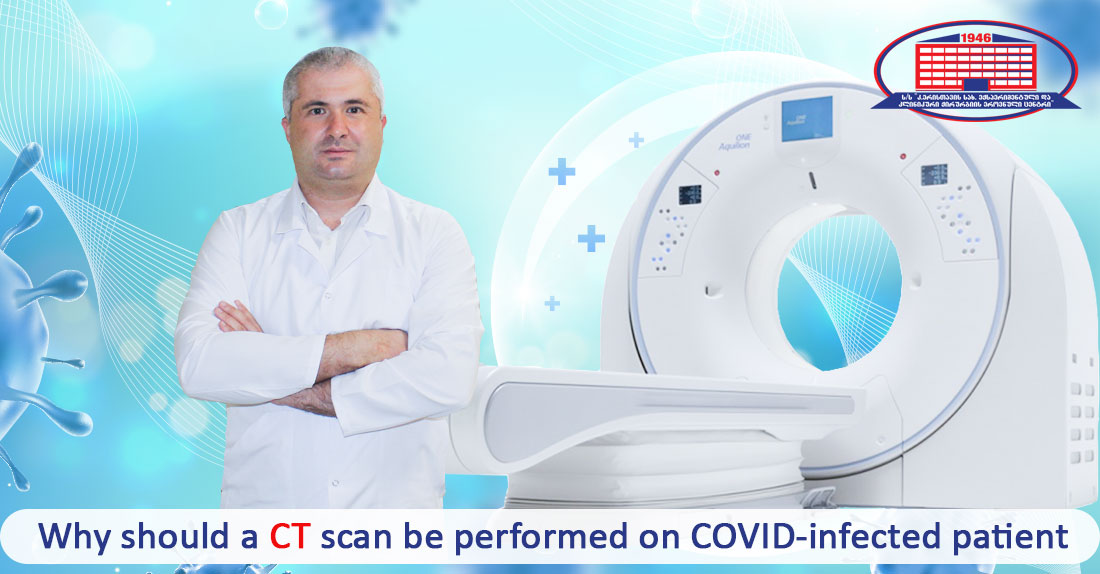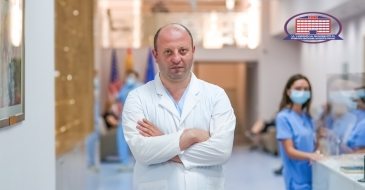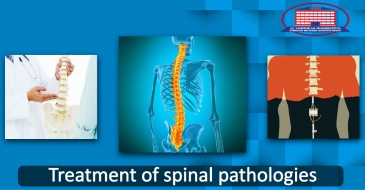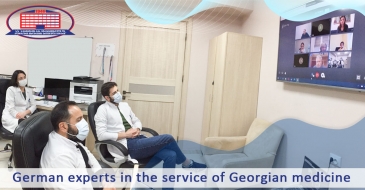
The interview is intended for a contingent who did not have a coronavirus detected in the laboratory and therefore, did not come under the supervision of the health care system
In the interview you will learn the following information:
- Which pathologies are diagnosed by tomography;
- The expediency of the research;
- Why computed tomography;
- Clinical CT benefits;
- The doctor advises us.
If family members have transmitted COVID, you may feel bad or may experience minor symptoms that make you suspect to have Covid-19, or if patients with COVID have had a prolonged change in health, even after measuring saturation with an oxygen pulse oximeter, the rate is low, Tamaz Jaoshvili, a radiologist at the National Center of Surgery, talks about the importance of CT during such times.
- Mr. Tamaz, what is computed tomography, and which pathologies can be diagnosed in a COVID-infected patient?
- This is a modern, high-tech, X-ray-based research method that allows us to evaluate this or that organ of the human body with high resolution.
In real-time, we can quickly diagnose many life-threatening diseases. The possibility of three-dimensional reconstruction provides additional benefits for accurate and quality evaluation of the image, in the case of COVId-infected patients, it allows us to determine the degree and severity of parenchymal damage in a timely and comprehensive manner through a detailed assessment of lung tissue. In case of still unconfirmed (meaning confirmation by PCR methodology), suspect and conduct a differential diagnosis using the CO-RADS classification methodology, and in the already proven case, calculate the semi-quantitative index score of world-proven lung parenchyma damage with high accuracy. As well as computed tomography with pulmonary artery angiography, quickly diagnose life-threatening, pulmonary artery thromboembolism, which is a very common complication of Covid-19 pneumonia.
- How appropriate is a CT scan during COVID infection?
- In the case of COVID-infected people, it is advisable to perform computed tomography prescribed by a clinician, based on the patient's complaints and subjective condition, where the main indications are:
- Rapidly developed acute respiratory failure;
- A persistent cough (dry cough due to mucosal catarrh);
- General serious condition of the patient.
In the presence of other laboratory data, when a thromboembolic complication is suspected, the question of conducting a CT angiography of the pulmonary artery is resolved.
- Why computed tomography for diagnosing lung pathology?
- This is the best research method for assessing the lung parenchyma, because it is characterized by high resolution, and the possibility of three-dimensional reconstruction is invaluable for the assessment of the chest cavity. Due to the specifics of X-ray, it is a non-alternative methodology for assessing lung tissue. It is fast, which allows the respiratory and motor artifacts to be minimized, and finally, we get the best image.
- What can you tell us about the advantages of computed tomography of the National Center of Surgery?
- At the National Center of Surgery, the current promotion for COVID-transmitted patients allows the population to conduct laboratory and CT examinations in consultation with a pulmonologist. We offer a full package of services. By changing the parameters, the radiation dose to the patient is significantly reduced.
The 32-bar Toshiba Aquilion RXL allows you to provide comprehensive information to a physician treating a patient of any complexity, as quickly as possible. The structure and quality of the radiological findings are correlated with current standards in the developed world. The radiologist together with the pulmonologist reviews the examination of all the patients individually, which ultimately allows the patient to be given the correct recommendation and prescription.
- What would you recommend and what recommendations would you give to COVID-19 infected patients?
- I would recommend that any examination, including computed tomography, be agreed with the treating clinician. Which will ultimately allow them to get the services they specifically need. Also, to properly plan both pre-investigation and post-investigation processes.
Wish you health!










